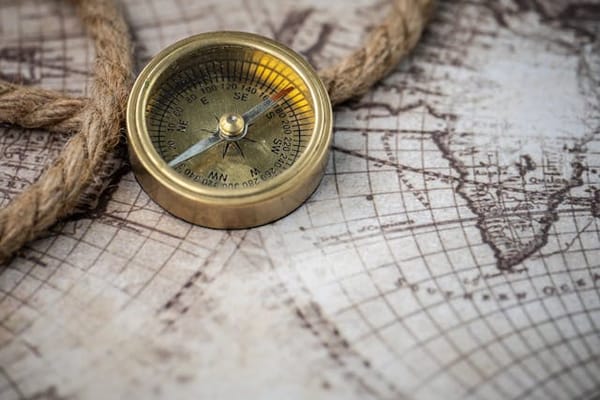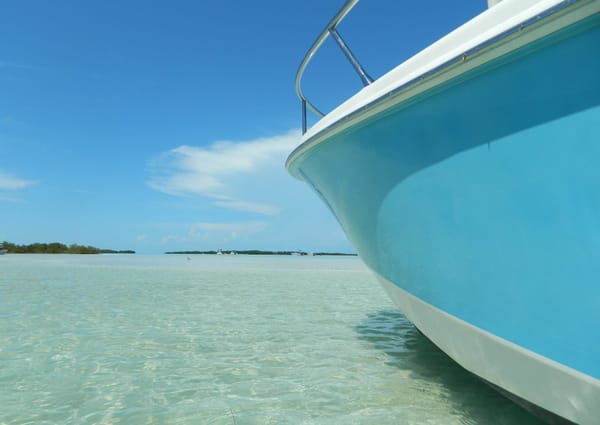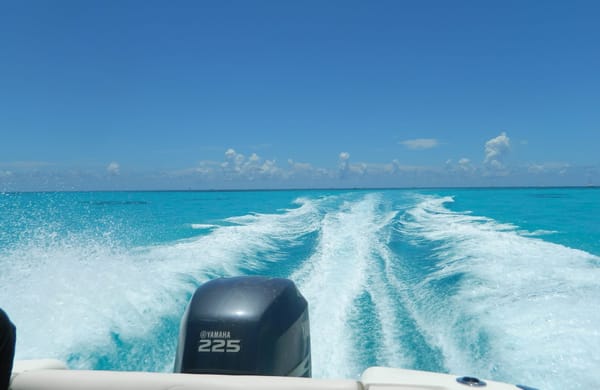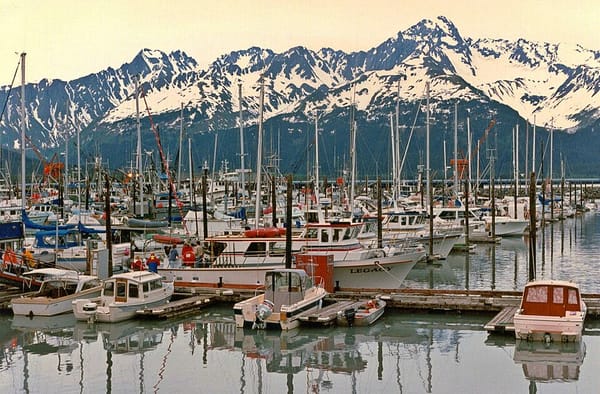Boating Safety: Man Overboard Retrieval Maneuvers
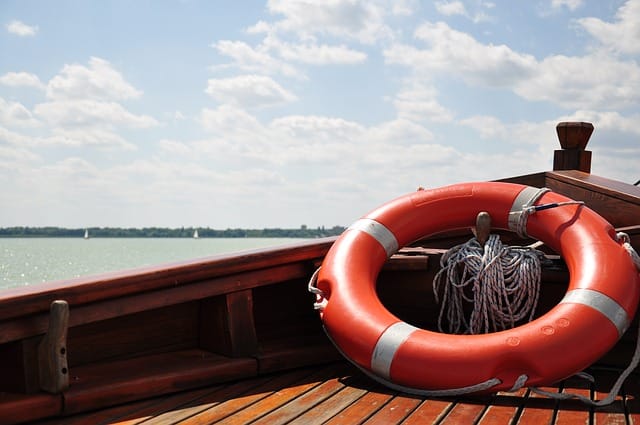
It’s inevitable. You’re in the middle of the lake, offshore or near a private boat dock rental and one of your passengers goes overboard. Whether they’ve fallen while skiing or tubing or just happened to take a dip over the side while underway, they’re now in the water and signaling to be picked up.
There are a couple of boat turnaround maneuvers that can be used to retrieve an overboard person. They’re known as the Williamson Turn, the Anderson Turn (or single turn), the Scharnow Turn and the Quick Turn (or Q turn). Who knew there were actual names for these turns (or even that turns had names)? Well, now you do.
Reasons a Passenger Might Need Retrieving
- Falling while waterskiing, wakeboarding or tubing
- Losing footing on a slippery deck
- Being swept over by waves
- Falling from a ladder or while sitting on the railing
- Swimming too far from the boat while anchored out
When using any of these turns, or any other turn for that matter, always (We repeat: always) take it slow. Bring the boat to an upwind position of the person overboard, making sure the person is forward of, and far from, the propeller. And, of course, always follow correct safety protocol by wearing life jackets, having a float plan and using your engine cut-off switch lanyard.
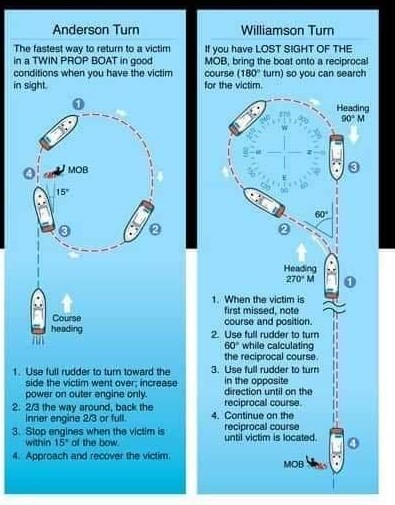
Photo: Marine Courses Center (Facebook)
Williamson Turn

The Williamson Turn is the most commonly used. It puts the boat on its original path back to where the person went overboard, taking the boat further from where the person is. It’s a good one to use in low visibility or when the person overboard is out of immediate sight but still nearby (but, of course, it can be used in most any situation).
- Put the rudder over full (meaning if the person fell to port side, put the rudder to port side).
- After deviating from course about 60 degrees, shift rudder full to opposite side.
- After coming about 20 degrees short of the return course, put the rudder amidships (in the middle) so that it’ll turn onto the return course
- Bring the boat upwind of the person.
- Stop alongside and well away from the propellers.
Anderson Turn
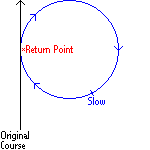
The Anderson Turn (or single turn) is the fastest method. It brings the boat back to a position it had previously passed. It’s a good one to use when there’s clear visibility. The general shape is like a circle.
- Stop the engine
- Put the rudder over full to the direction of the person. This means that if the person fell to the port side, you steer toward the port side.
- Deviate from the original course by about 250 degrees (about 2/3 of a circle)
- Then bring the rudder amidships (in the middle) and maintain your speed through the turn.
- Stop engines when person is 15 degrees off the bow.
- Stop with the person forward of the propellers.
Scharnow Turn
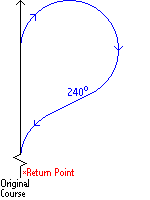
Photo: Wikimedia
The Scharnow Turn takes the boat back into its wake. With this turn, you need to know how much time has elapsed between the person going overboard and when you make the turn. It’s used when the person is further away than the turning radius of the boat. The shape of the turn is similar to the Williamson Turn.
- Put the rudder over hard to the side where the person is (if they’re starboard, put the rudder to starboard).
- After deviating from original course by about 240 degrees, turn the rudder hard to opposite side.
- When about 20 degrees short of the course, put the rudder amidships (in the middle of the ship/boat) so that it turns onto the return course and comes alongside the person overboard.
Quick Turn
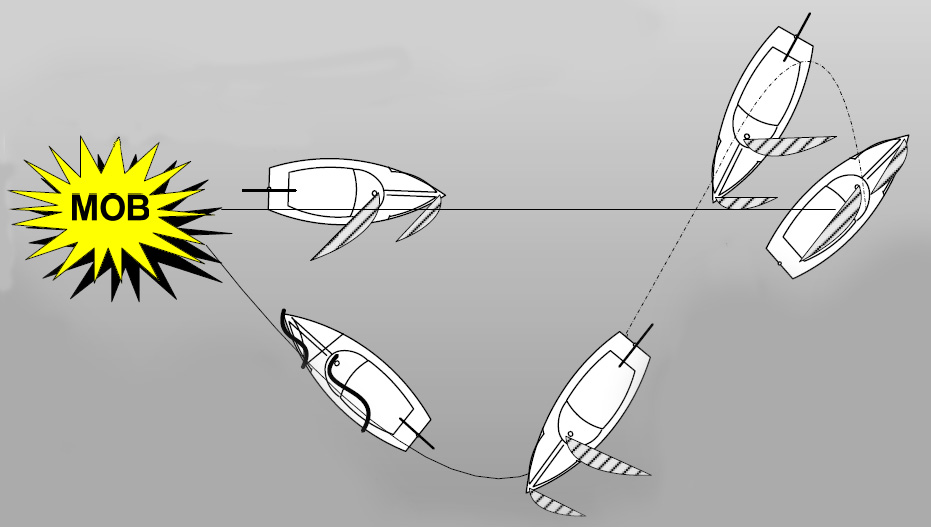
The Quick Turn (also known as the Q-turn or figure eight turn) is traditionally used for sailboats. The general shape of the turn is a figure 8.
- Change course to a beam reach (when the wind is coming at the sides) and hold for 15 seconds.
- Sail into the wind and tack.
- Deviate until the boat is at broad reach (when wind is coming from behind at an angle).
- Turn upwind so that the boat is pointing at the person. The boat should be on a close reach (more upwind than a beam reach).
- Slacken the mainsail until the boat comes to a stop with the person on the lee (downwind) side of the boat.
If all of those degrees, deviations and 2/3 of circles sound confusing, check out some more illustrations of each turn for a better understanding. Take a look at them before leaving a private boat slip for rent so you’ll be familiar if they’re needed.
So, how do you decide which maneuver to use? It depends on a couple of things.
- The location of the person overboard
- Whether the boat has sails or a motor
- Whether the person was seen going overboard or it wasn’t realized until later
- Available space for the boat to steer
We hope this has helped with any questions or concerns you have about retrieving a person overboard. Let’s get everyone back to the private boat slip rental, dock or marina safe and sound. Happy boating!
